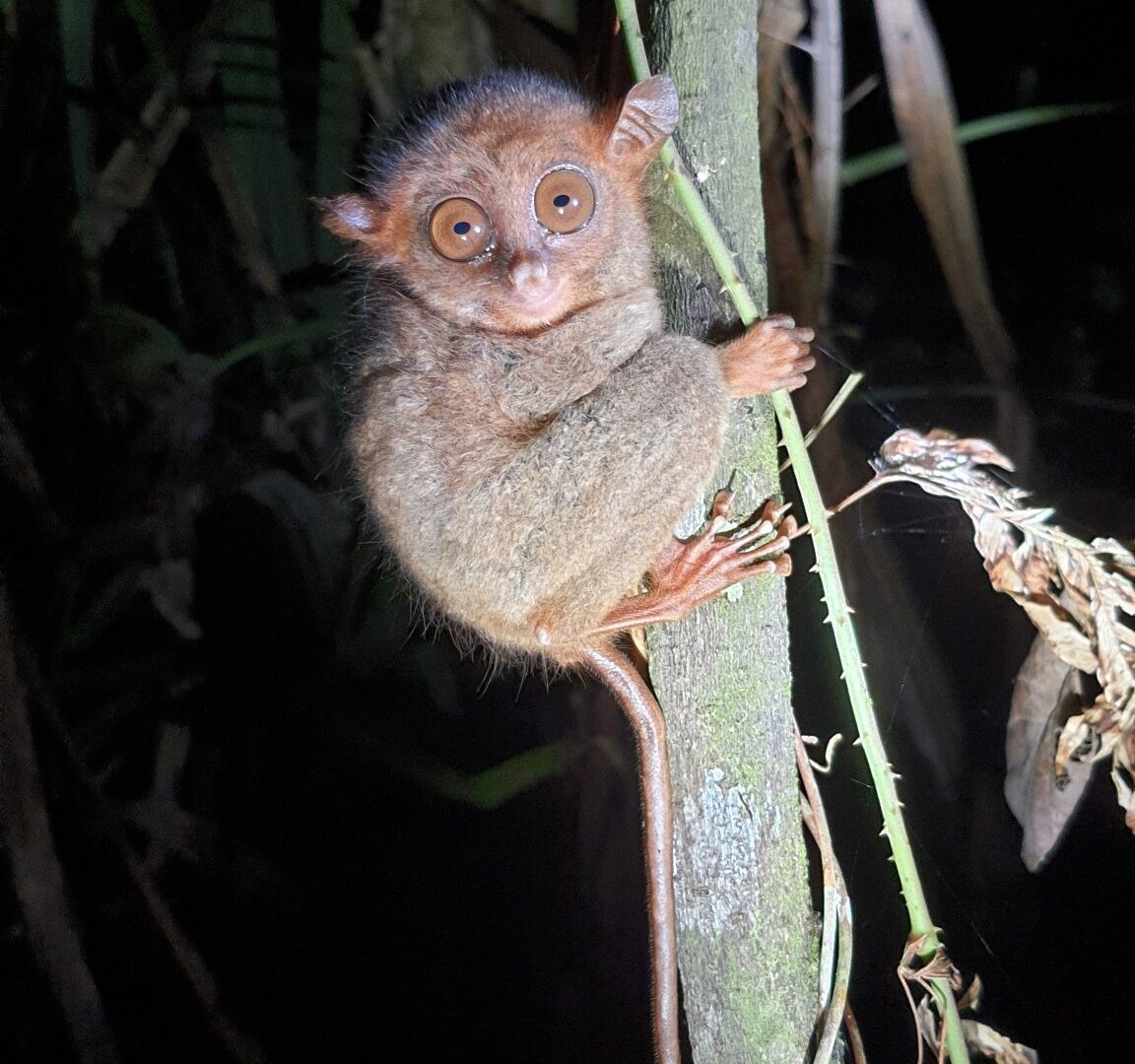TACLOBAN CITY — The University of the Philippines Visayas Tacloban College (UPVTC) disclosed that a part of the campus’ forested area was discovered to be home to some endangered tarsiers.
A team of researchers from the Division of Natural Sciences and Mathematics (DNSM) of UPVTC said that it has validated and documented the presence of Philippine tarsiers in the secondary forest in the area.
The Philippine tarsier, locally known as mago, is listed as “near threatened” by the International Union for Conservation of Nature (IUCN). This primate is said to be endemic in the islands of Mindanao, Bohol, Samar and Leyte.
The tarsier was spotted during the night surveys in Barangay Sta. Elena as part of an ongoing research project on Philippine tarsiers in Tacloban City.
The village, which is in the outskirts of the city, is the site of the new campus of UPVCT and UP Manila School of Health Sciences (UPM-SHS), which presently has a campus in Palo, Leyte.
The UP administration decided to relocate the two campuses to a 113-hectare property in Sta. Elena, Tacloban City in 2014 in the aftermath of super typhoon “Yolanda.”
The present location of UPVCT along Magsaysay Boulevard is within 40 meters of the coastline, which the government has declared a no-build zone.
In a post in its social media account, UPVTC DNSM said the research on tarsiers in Tacloban was motivated by anecdotal reports of sightings in the city and nearby municipalities.
“The sparse literature on the Leyte tarsier and anecdotal reports of sightings of the species particularly in the neighboring municipalities of Tacloban City motivated the UP Tacloban researchers to conduct a Philippine tarsier population study in the forests of Tacloban City,” it said.
“The presence of the Philippine tarsier in Tacloban City’s forests highlights the role of the city as a key biodiversity area. The presence of tarsiers and other endemic species should be taken into account in the city’s land-use plans, particularly in terms of protecting the areas where the tarsiers live,” it added.
